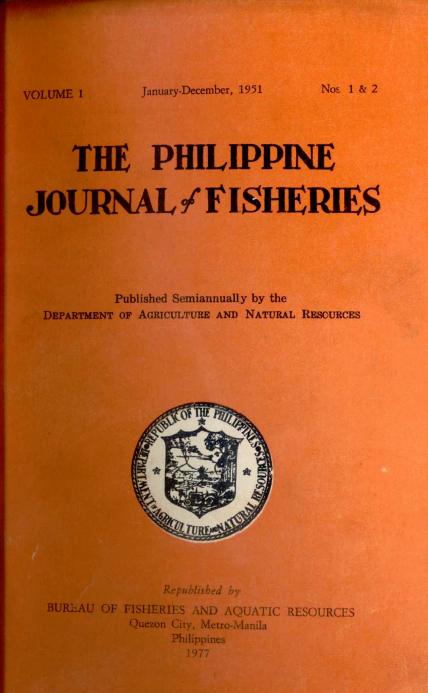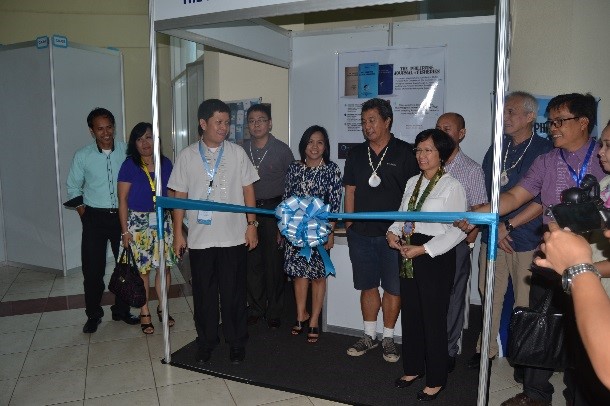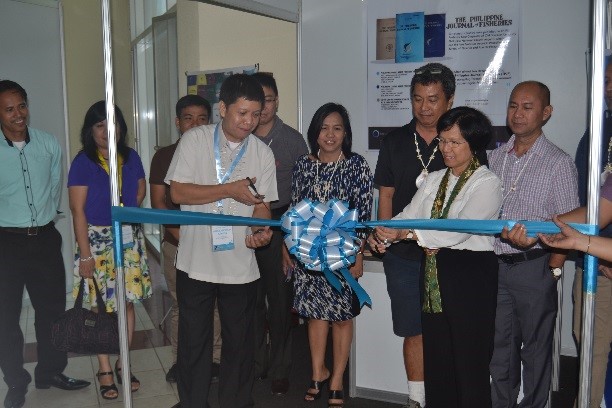The inception of The Philippine Journal of Fisheries (TPJF) in the early 1950s was among the major leaps of enthusiasm in fisheries research. However, during the late 1940s and early 1950s, there was not enough workforce and funding in the fisheries sector, which led ongoing projects to a halt, thus, capturing the attention of the government.
The Philippine Institute of Fisheries Technology was established in order to capacitate the needed workforce for the advancement of the fisheries sector. In July 1947 to June 1950, the institute sent students to be trained in the United States as part of The Philippine Fishery Program. Upon their return, these trainees contributed to the Philippine fisheries research and development, thus, increased the productivity of scientific publications in the country. Shortly after, with the government’s reinforcement, many Filipino researchers were deeply moved for the quest of new knowledge; hence, fisheries research in the Philippines was pushed forward.

Several scientific studies were featured in TPJF, which serves as the primary organ of the Bureau of Fisheries, of the Philippine Fisheries Commission, and of the Bureau of Fisheries and Aquatic Resources (BFAR). This was published through the Department of Agriculture and Natural Resources, and eventually, through BFAR. Its pilot issue appeared with January-June 1951 numbers 1 and 2. It had already published 23 volumes before its circulation ceased in 1992.
In 2015, the National Fisheries Research and Development Institute (NFRDI), the research arm of BFAR, created a project to revive TPJF. In the same year, the organization of the journal administrative board started with the appointment of the current editor-in-chief, Dr. Mudjekeewis D. Santos, and the creation of the editorial board members composed of local and international experts in the field of fisheries science.
The following year, TPJF is finally relaunched during the 7th Fisheries Scientific Conference last September 29-30, 2016, in Tagaytay City. A ribbon-cutting ceremony was held together with Ma’am Drusila Esther E. Bayate, NFRDI Interim Executive Director back then, Dr. Mudjekeewis Santos, TPJF Editor-in-Chief, and the experts who are members of the editorial board. Aside from this, the TPJF website was also created to serve as a platform for manuscript submission and other important information about the journal, such as history, publication policy, submission guidelines, and archives, among others. For journal promotion, TPJF social media accounts were created.


In 2017, two special issues were published under TPJF and these are “Fisheries Resources and Ecological Assessment of Manila Bay 2012-2015” and “Pollution in Manila Bay Aquaculture Farms,” which served as TPJF Vol. 24 No. 1 and No. 2, respectively. After 25 years of hiatus, TPJF is officially revived with the publication of these issues. This was followed by the publication of TPJF Vol 25 No. 1 and No. 2 and still counting.
The successful revival of TPJF would not happen if not for the efforts and time given by the following people: Ma. Salvacion Ferrer for doing the initial work in the revival of the journal; Mirriam Cayme and Ulysses Montojo for organizing the first editorial board meeting since its hiatus; John dela Peña for the scanned copies of the previous journal issues; Roselyn Aguila for being the managing editor from 2015 to 2017; Verinna Charisse Mangonon for being the assistant managing editor from 2016 to 2017 and for designing the current logo; and Jin Dionisio for designing the current issue layout.